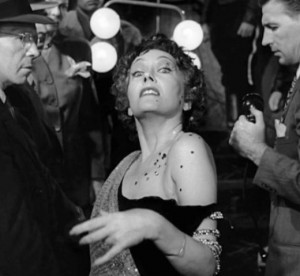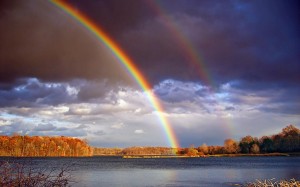Alive, Alive Oh!
I’m going to spend some time speaking Italian with my Dearly Beloved Tutor, Benedetto, and of course I’ll sit, and snuggle the cats, and eat chocolate cake with vanilla AND coffee ice cream, plus other similar celebratory activities….including lounging on the couch and reading for hours at a time…oh the luxurious sweetness of that!
In honor of the day I’ll mostly be reading: Alive, Alive, Oh!: And Other Things That Matter, by Diana Athill, her most recent book, written at the age of 97!
Here’s a sample:
“About halfway through my seventies I stopped thinking of myself as a sexual being, and after a short period of shock at that fact, found it very restful. To be able to like, even to love, a man without wanting to go to bed with him turned out to be a new sort of freedom. This realization was extraordinary. It was like coming out onto a high plateau, into clean, fresh air, far above the ant-like bustle going on down below me. It was almost like becoming another sort of creature.
“Well, I had in fact become another sort of creature: I had become an Old Woman! And to my surprise, I don’t regret it. In the course of the ninety-seven years through which I have lived, I have collected many more images of beautiful places and things than I realized, and now it seems as though they are jostling to float into my mind.
“For example: because (I suppose) it will soon be May, I have just caught the scent of bluebells in my room. Once a booksellers’ conference took me and some colleagues to Yorkshire, near Fountain’s Abbey. An energetic colleague said to me, ‘Let’s get the hotel to call us at 5 o’clock tomorrow morning, so that we can nip out and have a good look at the Abbey before the day beings.’
“Never an early riser, I was at first appalled, then felt ashamed of myself and agreed, so we did it, and the Abbey was indeed very lovely, standing there in the silent and delicate mistiness of an early morning in May; but even more magical was the nearby woodland sloping down to the river, carpeted with bluebells which were responding to the rising sun by releasing a great wave of scent — a wave more powerful than I’d known their flowers could possibly produce. The little new leaves on the branches above them were that first green, which looks as though made by light, and which will be gone in a day or two, and blackbirds had just started to sing.
“Those few minutes in the wood were so piercingly beautiful that I ought not to be surprised at their still being with me.”
***
Wow.
I am 65 today. Not exactly an Old Woman, but not that far from it. I take heart in reading these beautiful, clear, funny, honest, smart sentences….written by a woman who began her writing career at the age of 70!
I’m not done yet. In fact, I’m just gettin’ started.
Expansive, Unlimited
 Here’s another quote from the collection we were given at the Exploring the Nature of Awareness retreat I just attended. We were encouraged to continue our practice at home by reading, re-reading, and reflecting on one of the quotes each day.
Here’s another quote from the collection we were given at the Exploring the Nature of Awareness retreat I just attended. We were encouraged to continue our practice at home by reading, re-reading, and reflecting on one of the quotes each day.
For today I chose this one, from Intuitive Awareness, by Ajahn Sumedho:
“With intuitive awareness we are taking our refuge in awakeness, which is expansive, unlimited. Thought and mental conception create boundaries. The body is a boundary; emotional habits are boundaries; language is a boundary; words expressing feelings are also boundaries. That which transcends all of this, we begin to recognize through awakening.
“Even if what I’m saying sounds like rubbish to you, be aware of that. Open to the fact that you don’t like what I’m saying. It’s like this. It’s not that you have to like it: it’s starting from the way it is rather than you having to figure out what I’m trying to say.”
It’s Like This
 At the retreat I just returned from, the focus was on turning our attention from whatever thoughts/sensations/emotions we are experiencing and noticing, instead, the presence of awareness itself. We were given a handout with quotes from various teachers on the nature of awareness and were encouraged to continue our practice at home by taking one of these quotes each day and reflecting on them.
At the retreat I just returned from, the focus was on turning our attention from whatever thoughts/sensations/emotions we are experiencing and noticing, instead, the presence of awareness itself. We were given a handout with quotes from various teachers on the nature of awareness and were encouraged to continue our practice at home by taking one of these quotes each day and reflecting on them.
Here’s the quote I’m using today, from Intuitive Awareness, by Ajahn Sumedho:
Awareness is your refuge:
Awareness of the changingness of feelings,
of attitudes, of moods, of material change
and emotional change.
Stay with that, because it’s a refuge that is
indestructible.
It’s not something that changes.
It’s a refuge that you can trust in.
This refuge is not something that you create.
It’s not a creation. It’s not an ideal.
It’s very practical and very simple, but
easily overlooked or not noticed.
When you’re mindful,
you’re beginning to notice:
It’s like this.
And Yet….
 Once again my days are filling up. I leave for retreat on Wednesday, Dec 9 and won’t be back until the wee hours of the morning on Thursday, Dec 18. There is much to be done between now and Wed, so today will be my last post until after I get back…so check back again on Monday, Dec 21.
Once again my days are filling up. I leave for retreat on Wednesday, Dec 9 and won’t be back until the wee hours of the morning on Thursday, Dec 18. There is much to be done between now and Wed, so today will be my last post until after I get back…so check back again on Monday, Dec 21.
In the mean time, I leave you with this selection from my always-to-be-consulted-before-traveling guide book: Invisible Cities, by Italo Calvino.
Hidden Cities 2
In Raissa, life is not happy. People wring their hands as they walk in the streets, curse the crying children, lean on the railings over the river and press their fists to their temples. In the morning you wake from one bad dream and another begins. At the workbenches where, every moment, you hit your finger with a hammer or prick it with a needle, or over the columns of figures all awry in the ledgers of merchants and bankers, or at the rows of empty glasses on the zinc counters of the wineshops, the bent heads at least conceal the general grim gaze. Inside the houses it is worse, and you do not have to enter to learn this: in the summer the windows resound with quarrels and broken dishes.
And yet, in Raissa, at every moment there is a child in a window who laughs seeing a dog that has jumped on a shed to bite into a piece of polenta dropped by a stonemason who has shouted from the top of the scaffolding, “Darling, let me dip into it,” to a young serving-maid who holds up a dish of ragout under the pergola, happy to serve it to the umbrella-maker who is celebrating a successful transaction, a white lace parasol bought to display at the races by a great lady in love with an officer who has smiled at her taking the last jump, happy man, and still happier his horse, flying over the obstacles, seeing a francolin flying in the sky, happy bird freed from its cage by a painter happy at having painted it feather by feather, speckled with red and yellow in the illumination of that page in the volume where the philosopher says: “Also in Raissa, city of sadness, there runs an invisible thread that binds one living being to another for a moment, then unravels, then is stretched again between moving points as it draws new and rapid patterns so that at every second the unhappy city contains a happy city unaware of its own existence.”
Four Noble Tasks
 I’m really loving Stephen Batchelor‘s new book, After Buddhism: Rethinking the Dharma for a Secular Age. (I quickly downloaded it and started reading right after watching a live video broadcast yesterday of him with John Peacock and Marc Akincano Weber announcing the opening of their new Bodhi Institute — in partnership with Christine Feldman — in England.)
I’m really loving Stephen Batchelor‘s new book, After Buddhism: Rethinking the Dharma for a Secular Age. (I quickly downloaded it and started reading right after watching a live video broadcast yesterday of him with John Peacock and Marc Akincano Weber announcing the opening of their new Bodhi Institute — in partnership with Christine Feldman — in England.)
I’ve read many of Batchelor’s previous books — Confessions of A Buddhist Atheist and Buddhism Without Beliefs being two of my favorites. So far, the material in this one is not especially new, but the foundation for the secular perspective is much deeper and more carefully articulated here.
I especially like his reframing of the classic Four Noble Truths into the Four Noble Tasks. (Something he’s been talking about for many years, using a variety of different ways to articulate this understanding.)
Here’s my take on these Noble Four:
1. (There is suffering.) The first task is to understand its nature.
2. (The cause of suffering is the thirst for things to be different than they are.) The second task is to let go of it.
3. (There is an end to suffering.) The third task is to experience the peace that comes with letting go.
4. (There is a path that leads to the end of suffering.) The fourth task is to practice an integrated way of life that allows for this letting go.
Here they are in Stephen’s language:
1. Embrace life.
2. Let go of what arises.
3. See its ceasing.
4. Act!
An Intuitive Sense of What’s Possible
 One of the many wonderful (and ordinary) things Mirabai and I talked about while I was staying with her was Sharon Salzberg‘s book, Faith: Trusting Your Own Deepest Experience. (Sharon was one of the guest teachers at the CDL retreat.) The book had come out a couple of years ago and I thought I’d read it, but during my discussion with Mirabai it became clear that I had not.
One of the many wonderful (and ordinary) things Mirabai and I talked about while I was staying with her was Sharon Salzberg‘s book, Faith: Trusting Your Own Deepest Experience. (Sharon was one of the guest teachers at the CDL retreat.) The book had come out a couple of years ago and I thought I’d read it, but during my discussion with Mirabai it became clear that I had not.
So of course, as soon as I got home, I started reading. And I couldn’t stop! It is EXCELLENT. (Despite the title, which I think is the reason I never got around to reading it in the first place. “Faith.” Not my favorite concept — at least not the way it’s usually meant, i.e. a belief you’re supposed to have, no matter how irrational, unlikely, and/or contrary to fact.)
But I love this book! Here’s a sample:
“I stepped onto the spiritual path moved by an inner sense that I might find greatness of heart, that I might find profound belonging, that I might find a hidden source of love and compassion. Like a homing instinct for freedom, my intuitive sense that this was possible was the faint, flickering, yet undeniable expression of faith.
“The breakout moment of faith was my decision to travel to India without knowing where to go once I got there. A few days before my departure, Chogyam Trungpa Rinpoche, a Tibetan Buddhist teacher, was scheduled to speak in Buffalo. I decided to go. Trungpa Rinpoche was the first practicing Buddhist I’d encountered. His background seemed very exotic…
“After his talk, Trungpa Rinpoche asked people to submit written questions. Mine happened to be the first piece of paper he picked out of the huge stack in front of him. He read the question aloud: ‘In a few days I am leaving for India to study Buddhism. Do you have any recommendations as to where I should go?’
“He was silent for a few minutes, then in his precise British accent he replied: ‘In this matter you had perhaps best follow the pretense of accident.’ That was it–no names or addresses, no maps, no directions.
“What could he mean by ‘the pretense of accident?’ This was the first intimation that I might be embarking on a journey unlike anything I could image or predict.”
***
No kidding.
Even if you think you already know everything about Sharon and what it’s like to take a “leap of faith”….check out this book. It’s quite the story. And it just “happens” to be exactly the book I needed to be reading at this moment. What an accident!
Waking Up White
 I leave on Saturday morning for the next Community Dharma Leader (CDL) training retreat. Diversity is a big topic in this program and one of the ways we’re working through it is by reading assigned texts (for example: Waking Up White, by Debby Irving), then meeting in small groups (in my case, by phone/Skype) to discuss our thoughts/feelings/concerns, using prepared questions such as:
I leave on Saturday morning for the next Community Dharma Leader (CDL) training retreat. Diversity is a big topic in this program and one of the ways we’re working through it is by reading assigned texts (for example: Waking Up White, by Debby Irving), then meeting in small groups (in my case, by phone/Skype) to discuss our thoughts/feelings/concerns, using prepared questions such as:
* What motivates you to be a part of this process?
* What concerns, fears, or other feelings arise as this conversation opens?
* What potential do you see for your role as a Dharma leader?
* When did you first recognize yourself as having a racial identity?
* What has supported your growing awareness about racial identity?
* What feelings arise in response to the idea of privilege?
***
There are four “modules” in the program we’re following, which is based on the work done by White Awake. I’ve only completed the first one. But already, it seems to have had a surprisingly enlivening effect on my thinking about myself as a white woman, born in the 1950s, into a professional middle-class family in the American midwest.
I was expecting to feel a lot of guilt.
But that’s not it. Guilt is a narrowing of one’s focus. What I’m getting from this exploration is just the opposite….a widening, deepening, more responsive awareness to the interconnected aspects of race/class/ethnicity/identity for me and for others.
Now what to do about it.
Stay tuned.
It’s All About…..
 At Sunday Sangha, I talked about being in the middle of “The Movie of Me” (that mental narration about me and my response to whatever’s going on around me that seems to run endlessly in my head…I don’t like this…I don’t like that…I wish I had…I used to have…why don’t I have…how can I get…how can I get out of…etc etc etc etc).
At Sunday Sangha, I talked about being in the middle of “The Movie of Me” (that mental narration about me and my response to whatever’s going on around me that seems to run endlessly in my head…I don’t like this…I don’t like that…I wish I had…I used to have…why don’t I have…how can I get…how can I get out of…etc etc etc etc).
The idea of that stream of thought being a movie came from something Phillip Moffitt wrote about in Dancing with Life. He suggests challenging the ego’s desire to always be in charge by: Giving Up Being the Star of Your Own Movie.
“The unfolding of events that make up your life is like a movie, is it not? And you interpret every scene or event from the vantage point of being the star of your movie–is it good or bad for you, do you like it or not, and so on. Once you renounce being the star of your own movie, you begin to see the unfolding of each scene and the movie as a whole from multiple perspectives. You don’t forsake your role in the movie, but once you cease making it be all about you, the movie creates less anxiety and you are more able to live from your core values.”
Excellent suggestion.
Vivid, Yes — Tangible, No
 Our Dharma Book KM Group is getting into some really interesting stuff now. Like Intention and Consciousness and the Nature of the Mind! Here’s a passage from the book we’re reading (Mindfulness, by Joseph Goldstein), where he quotes Dilgo Khyentse Rinpoche:
Our Dharma Book KM Group is getting into some really interesting stuff now. Like Intention and Consciousness and the Nature of the Mind! Here’s a passage from the book we’re reading (Mindfulness, by Joseph Goldstein), where he quotes Dilgo Khyentse Rinpoche:
“Normally we operate under the deluded assumption that everything has some sort of true, substantial reality. But when we look more carefully, we find that the phenomenal world is like a rainbow–vivid and colorful, but without any tangible existence.
“When a rainbow appears, we see many beautiful colors–yet a rainbow is not something we can clothe ourselves with, or wear as an ornament; it simply appears through the conjunction of various conditions. Thoughts arise in the mind in just the same way. They have no tangible reality or intrinsic existence at all. There is therefore no logical reason why thoughts should have so much power over us, not any reason why we should be enslaved by them…
“Once we recognize that thoughts are empty, the mind will no longer have the power to deceive us. But as long as we take our deluded thoughts to be real, they will continue to torment us mercilessly, as they have been doing throughout countless past lives.”
Not Indifferent, But Absolutely Patient
 At last week’s Sunday Sangha, we had a lively discussion about Equanimity…what it is (non-reactivity) and what it isn’t (indifference)…so I thought for next Sunday, I’d continue in that vein by reading this passage from Meditation: A Way of Awakening, by Ajahn Sucitto.
At last week’s Sunday Sangha, we had a lively discussion about Equanimity…what it is (non-reactivity) and what it isn’t (indifference)…so I thought for next Sunday, I’d continue in that vein by reading this passage from Meditation: A Way of Awakening, by Ajahn Sucitto.
“Equanimity is the widest and most still register of the heart. While based on empathy, the response of equanimity to what it meets is to hold whatever feeling, perception or activity that arises in a wide and non-reactive space. Equanimity is a rare quality because our normal response to ourselves and others is to pick at the flaws and to polish and relish the good.
“This is natural enough, but where equanimity pays off is in meeting situations and conditions that we seem unable to change: the destructive or pointless habits of others, or the irritating phobias and reactions that arise in our own minds. Without equanimity, we either get frustrated to the point of anger or despair, give up and lose faith or we gloss it all over with denial.
“Equanimity retains empathy–it’s not indifferent but it is absolutely patient. When meeting the good, we notice the sense of the skillful and the brightness that it causes — but we don’t get giddy and driven by perfectionism to always expect the best from ourselves and others. With the bad, we notice how that is, without getting lost in wounding and blaming. In both cases, we lessen the potential for suffering and stress…
“The aim here is not to whitewash behavior that could do with an overhaul, but to release the activity of taking it to be a self. (Bad people do some good things, and good people get it wrong sometimes…this is the realization of not-self.)
“When this reflexive activity [of self’-making] is released or weakened, a truthful assessment and awareness of the possibilities of change can take place. We keep faith with ourselves and others. We can take responsibility for the causes and conditions that our mind encourages in the present, but not be weighed down by the error of the past.”

